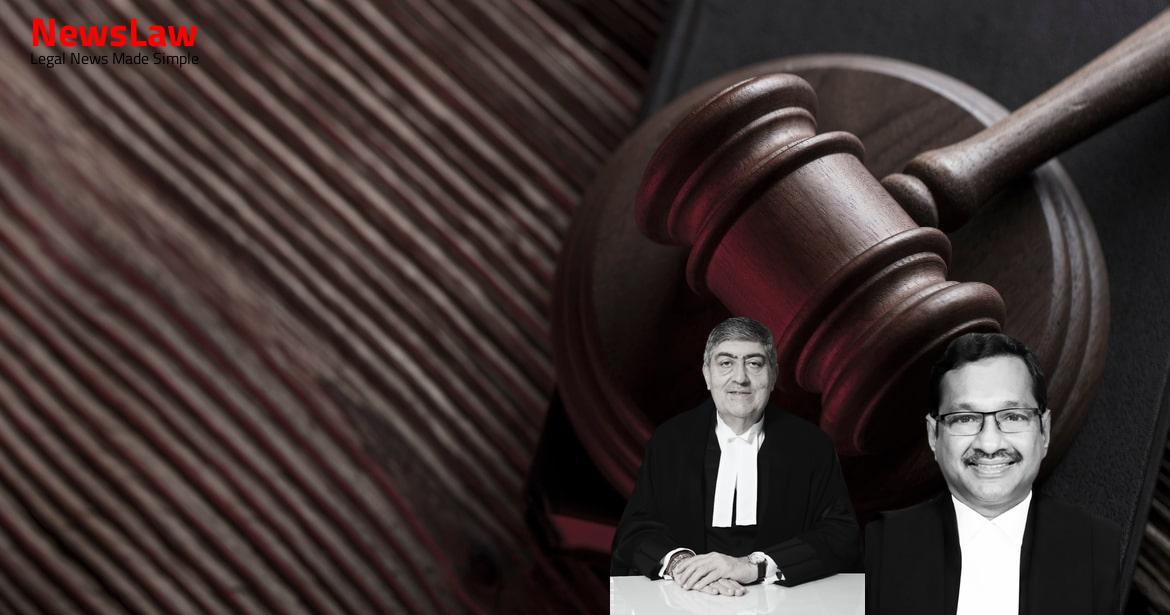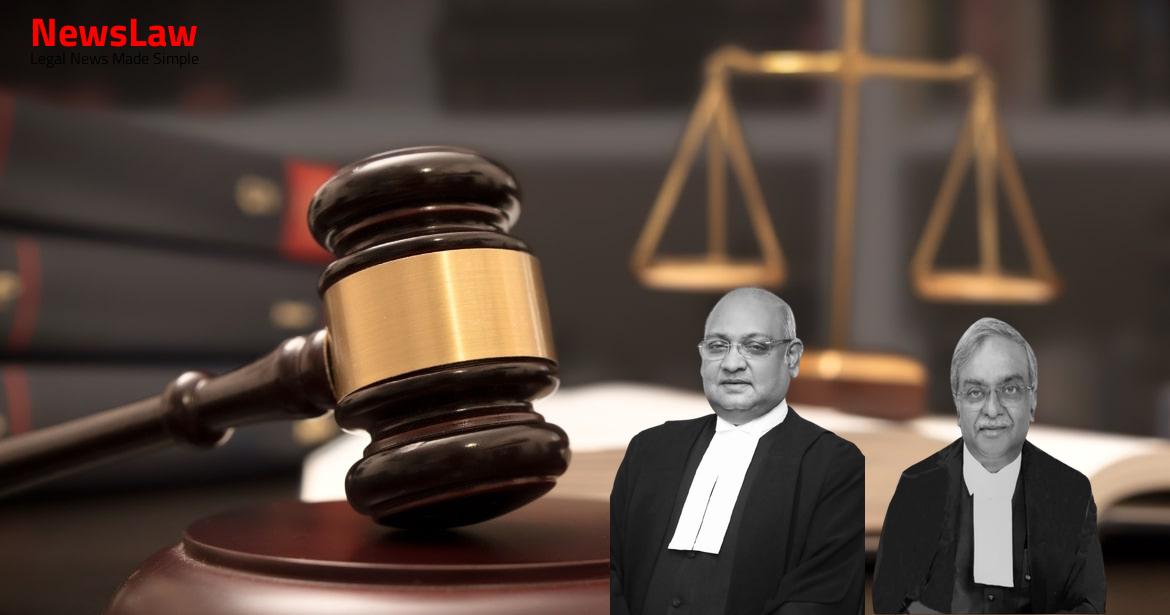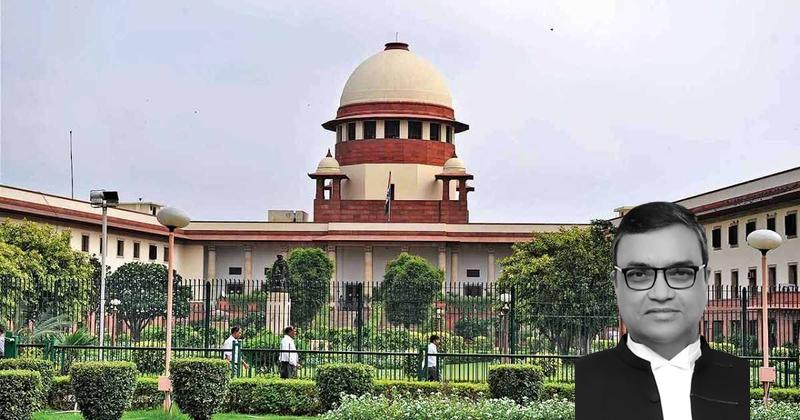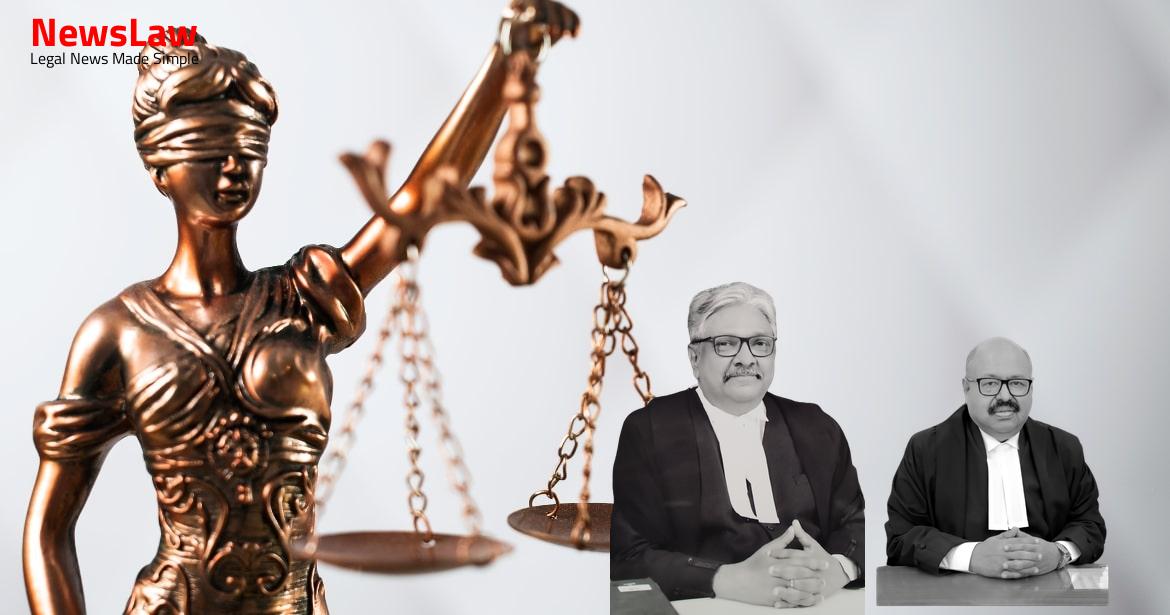Explore the significant legal analysis conducted by the Court in a complex Will dispute case. The Court’s thorough examination of evidence, witness credibility, and judicial reasoning played a paramount role in reaching a just conclusion. Stay tuned to unravel the nuanced legal intricacies involved in this intriguing case.
Facts
- Ms. Jessie Jayalakshmi executed a registered Will in favor of the Appellant on 04.09.1985.
- Respondent No. 1 had a mortgage in favor of deceased Ms. Jessie Jayalakshmi.
- Appellant claimed adoption by Ms. Jessie Jayalakshmi and care during her illness.
- Respondents disputed the suit based on a mortgage mentioned in Exhibit D1.
- Respondent No.2 is the son of Respondent No.1.
- Ms. Kantha Lakshmi filed for divorce in MC No. 879 of 1987.
- Scribe of Exhibit D1 not examined, thumb impression smudged.
- Appellant filed suit for possession in O.S. No 51 of 1992, decreed on 11.12.2003.
- Exhibit D1 replaced Exhibit P4, attested by Appellant’s brother.
- Trial Court decreed in favor of the Appellant on Exhibit P4 and doubted genuineness of Exhibit D1.
- Respondents appealed to the High Court in RFA No 692 of 2004.
- The High Court dismissed the suit by allowing the appeal due to suspicion surrounding Exhibit P4.
- The evidence of PW3 was deemed insufficient to dispel the suspicion.
- It was found illogical to exclude the sister of the Appellant and PW2 from the Will.
- The High Court declined to condone the delay in an application for review filed by the Appellant.
- The High Court reaffirmed the Trial Court’s findings on the genuineness of Exhibit D1.
Also Read: Supreme Court Judgment on Single Till Mechanism for HRAB Calculation: A Comprehensive Analysis
Issue
- The Trial Court framed several issues for consideration in the case.
- The first issue is regarding the acquisition of title to the suit property by the Plaintiff through a Will dated 04.09.1985 executed by late Jessie Jayalakshmi.
- The second issue questions the authenticity of a Will dated 16.08.1996, claiming it to be a fabricated and forged document.
- The third issue concerns the Defendant’s occupation of the schedule property as a licensee free of charges.
- Another issue addresses whether the Plaintiff has a cause of action for the suit.
- Lastly, the Court considered whether the suit is barred by limitation.
Arguments
- The First Appellate Court has jurisdiction to satisfy itself on the suspicion surrounding Exhibit P4.
- Ms. Kiran Suri, the learned Senior Counsel, cited judgments such as A. Joseph Antony Lazarus (Dead) by LRs v A.J. Francis, (2006) 9 SCC 515 and Mahesh Kumar (Dead) By LRs v Vinod Kumar & Ors., (2012) 4 SCC 387 to support her submission.
- Section 3 of the Indian Evidence Act defines ‘a fact’.
Also Read: Selection and Appointment of Judicial Officers in Himachal Pradesh
Analysis
- Section 68 of the Act must be followed when proving a Will
- Order VI of the Code applies equally to plaints and written statements, and evidence must be based on pleadings
- If a party admits execution of a Will proved under Section 63 and Section 68, it is a relevant fact proved conclusively
- Trial court’s view should be favored if two views are possible
- Wills are not covered under Section 17 or 18, and registration is optional
- Appellate courts should consider trial court’s observations and demeanor of witnesses
- Suspicious circumstances are matters of fact
- Appellate court must give reasons for differing with trial court
- Relevant materials must be considered, and reasoning provided for decisions
- Exclusion of parties or lack of objection may not create suspicion
- Exhibit D1 found to be forged, Exhibit P4 accepted as genuine
- Admissions do not need proof if clear and unequivocal
- Specific pleadings and denials required under Code of Civil Procedure
- Relief granted in civil suits must align with pleadings and established facts
- High Court made conclusions without adequate reasoning
- Presumption under Section 114(e) applies to judicial and official acts
- First appellate court must respect trial court’s views and observations
- Appellate courts should exercise discretion cautiously and based on facts and law
- The High Court, as a first appellate court, has the authority to delve into both questions of law and questions of fact.
- An appeal is essentially a re-hearing of the main matter, allowing the appellate court to review all evidence, including oral and documentary, and draw its own conclusions.
- In cases where the credibility of witnesses is at issue, the trial court’s observation of the demeanor and conduct of witnesses holds weight and appellate courts should respect this unless there is a significant imbalance of probabilities.
- The appellate court must carefully weigh the reasons given by the trial court when considering reversing a finding of fact, stating cogent and convincing reasons for disagreement.
- The appellate court’s duty is to determine if the evidence as a whole can reasonably support the trial court’s conclusion, especially when it rests on the observation of witness demeanor.
- A court can take judicial note of a fact that is apparent on the face of the record.
- The general rule is that the appellate court should uphold the trial court’s findings of fact unless there are specific reasons or notable imbalances to indicate otherwise.
- When a conflict arises in oral evidence, and credibility is the determining factor, the appellate court should not interfere with the trial court’s findings unless there are compelling reasons to do so.
- If the trial court has provided detailed reasons for disbelieving a witness’s testimony, the appellate court should address these reasons before forming a contrary opinion.
- In an appeal involving oral evidence, the appellate court must carefully consider the trial court’s judgment, giving due weight to the firsthand observation of witness demeanor.
- Important elements regarding witness credibility must be taken into account by the trial court, and if these are not properly weighed, the appellate court may overturn the decision if the trial court’s view is deemed incorrect.
- A person cannot deny the truth of a thing if he intentionally caused or permitted another person to believe it to be true and act upon that belief.
- This provision is mandatory and shall not be used as evidence unless at least one attesting witness has been called to prove its execution.
- The provision is a result of a motive or preparation.
- The High Court should have considered the conduct and attitude of Respondent No.1 in relation to the disputed Exhibit D1.
- Factors like the fabrication of evidence, severance of relationship due to divorce decree, and the status regarding the suit property should have been given weightage by the court.
- The court should have taken into account the 19 Respondents’ acceptance of Exhibit P4 without questioning it, which could have influenced the decision.
- The court’s focus should have been on the relevant materials and circumstances rather than solely questioning the authenticity of Exhibit P4.
Decision
- The appeals have been allowed by restoring the Judgment and Decree of the Trial Court.
- The judgment and decree of the Appellate Court in RFA No 692 of 2004, as confirmed in R.P. No.279 of 2007, is set aside.
- No costs are involved in this decision.
Case Title: V.PRABHAKARA Vs. BASAVARAJ K. (DEAD) BY LR. (2021 INSC 626)
Case Number: C.A. No.-001376-001377 / 2010



